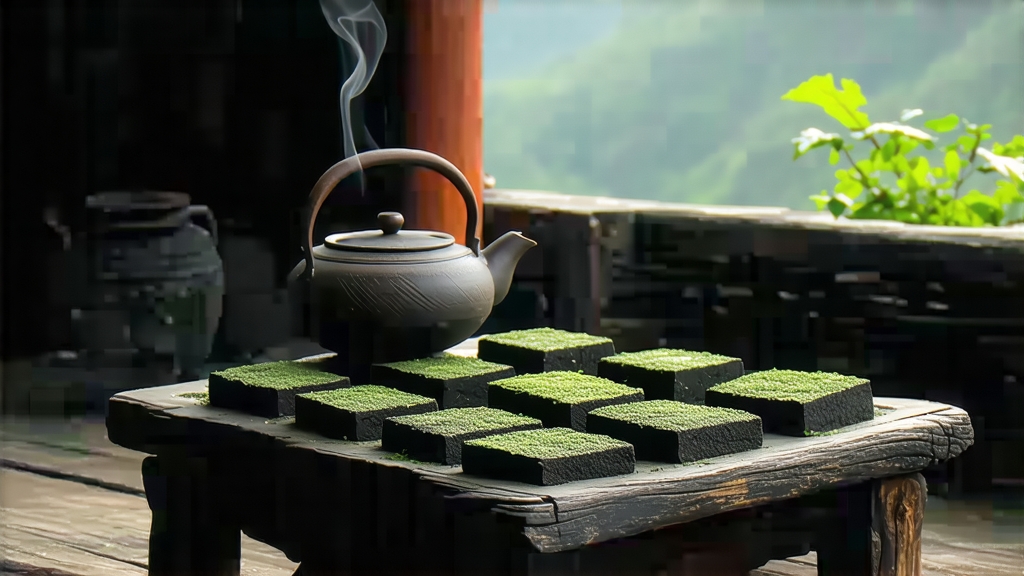
Tucked away in the humid, karst-ringed valleys of southern China, Liu Bao tea has spent four centuries quietly perfecting the art of transformation. To most outsiders “dark tea” begins and ends with Yunnan’s Pu-erh, yet Liu Bao—older in technique, subtler in flavor—was the original cargo that rode the legendary “Tea-Horse Road” north to Mongolia and west to central Asia. Today this Guangxi heirloom is experiencing a renaissance among collectors who prize its camphor-betel complexity and its uncanny ability to taste younger at sixty than at six. The following guide walks international drinkers through everything that makes Liu Bao singular: its origin myth, micro-terroirs, labor-intensive craft, and the patient ritual needed to unlock what the Cantonese call “the gentle doctor of the stomach.”
-
Historical footprints from Ming military rations to modern auction blocks
Liu Bao takes its name from the small administrative village of Liu Bao in Wuzhou Prefecture, Guangxi Zhuang Autonomous Region. The earliest dated reference appears in the 1620 Gazetteer of Cangwu County, describing compressed tea packed in bamboo baskets for Qing troops suppressing southern rebellions. The leaf traveled light, resisted mold, and improved with monsoon voyages—qualities that soon caught the eye of Hong Kong tea merchants. By the late Qing, Liu Bao baskets were stacked three decks high on junks sailing the Pearl River Delta, destined for Malaysia’s tin mines where coolies swore the brew cured beriberi and cooled tropical fever. In 2008 a 1958 Liu Bao basket sold at a Kuala Lumpur auction for USD 45,000, putting the tea on the same speculative map as vintage Pu-erh and propelling a wave of new plantation investment back in Wuzhou. -
Terroir: why Guangxi’s steam room matters
Unlike Yunnan’s high-altitude sun-dried maocha, Liu Bao is born in a climatic steam bath. Wuzhou lies at 23° N, barely 50 m above sea level, where the Xun and Gui Rivers collide to create year-round relative humidity above 85 %. The soil is lateritic, rich in iron oxide and kaolin, draining quickly yet retaining warmth—ideal for the large-leaf Camellia sinensis var. sinensis ecotype known locally as “Qunti Zhong.” The same humidity that plagues winemakers becomes an ally here, nurturing the indigenous microbial consortia (Aspergillus niger, Blastobotrys adeninivorans, and a novel species, Eurotium wuzhouense) that drive Liu Bao’s secondary fermentation. Recent metagenomic work at the Chinese Academy of Agricultural Sciences shows these microbes are absent in Pu-erh piles, explaining the divergent flavor trajectories despite both teas being “dark.” -
From pluck to basket: the nine acts of Liu Bao craft
a. Pluck: only the “zhong kai mian” standard—three leaves and a bud—picked between Qingming and Grain Rain when spring moisture peaks.
b. Solar withering: leaves are spread 3 cm thick on outdoor bamboo mats for 40–60 min, turned every 10 min until the grassy volatiles drop by 70 %.
c. Indoor piling: moved to a humid loft where they are stacked 40 cm deep and left to heat-shock for 3 h; temperature climbs to 38 °C, initiating non-enzymatic browning.
d. Kill-green: flash-fried in 220 °C woks for 4 min; the goal is 55 % moisture retention, higher than green tea, preserving substrates for later microbial action.
e. Rolling: 35 min of light pressure to rupture 60 % of cell walls without excessive juice expression, keeping the strip loose for oxygen diffusion.
f. Primary drying: baked at 80 °C until 18 % moisture, producing “maocha” that smells faintly of jackfruit.
g. Wet piling (the signature): maocha is rehydrated to 28 % moisture with warm river water, piled 1.2 m high, and covered with jute sacks. Every four days the pile is turned; temperature is kept between 55–65 °C for 25–30 days. The tea turns walnut-brown, and a sweet earth note replaces the fruity top.
h. Basket compression: while still warm